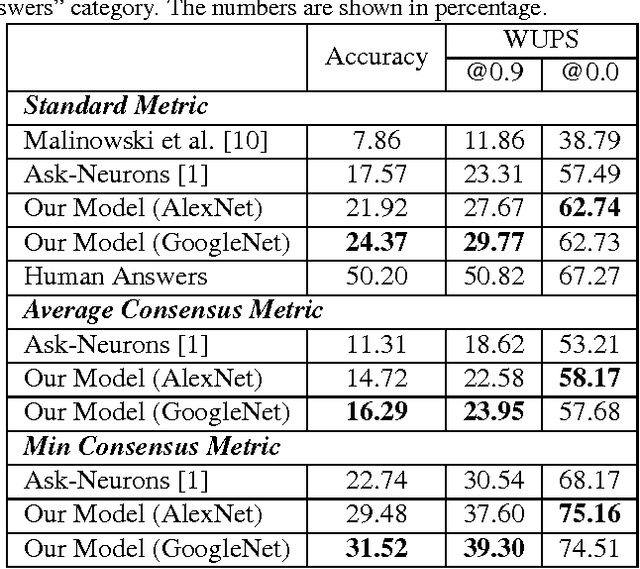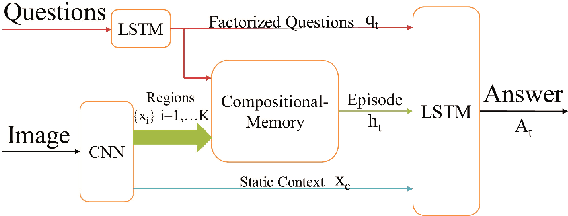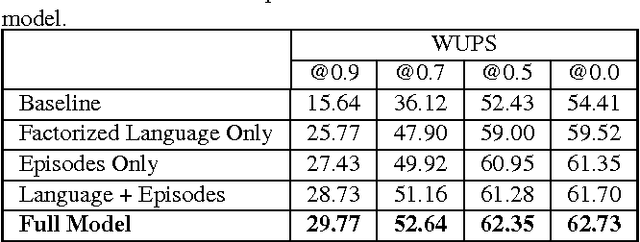Compositional Memory for Visual Question Answering
Paper and Code
Nov 18, 2015



Visual Question Answering (VQA) emerges as one of the most fascinating topics in computer vision recently. Many state of the art methods naively use holistic visual features with language features into a Long Short-Term Memory (LSTM) module, neglecting the sophisticated interaction between them. This coarse modeling also blocks the possibilities of exploring finer-grained local features that contribute to the question answering dynamically over time. This paper addresses this fundamental problem by directly modeling the temporal dynamics between language and all possible local image patches. When traversing the question words sequentially, our end-to-end approach explicitly fuses the features associated to the words and the ones available at multiple local patches in an attention mechanism, and further combines the fused information to generate dynamic messages, which we call episode. We then feed the episodes to a standard question answering module together with the contextual visual information and linguistic information. Motivated by recent practices in deep learning, we use auxiliary loss functions during training to improve the performance. Our experiments on two latest public datasets suggest that our method has a superior performance. Notably, on the DARQUAR dataset we advanced the state of the art by 6$\%$, and we also evaluated our approach on the most recent MSCOCO-VQA dataset.
 Add to Chrome
Add to Chrome Add to Firefox
Add to Firefox Add to Edge
Add to Edge